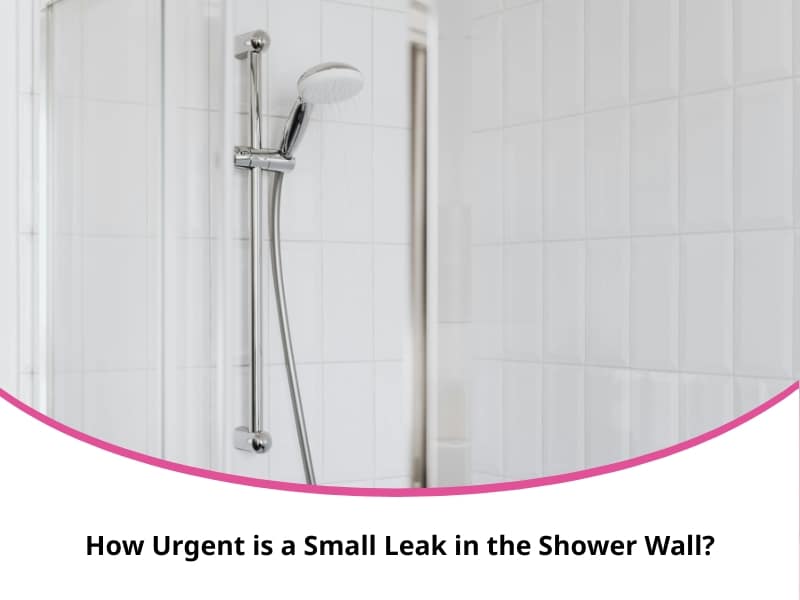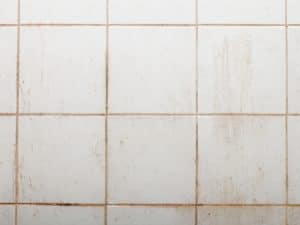A small leak in your shower wall may seem like a minor issue, but when it comes to maintaining the health and integrity of your bathroom, even the smallest of leaks can lead to major problems. Understanding the urgency of a small shower wall leak and taking appropriate action can save you both time and money in the long run. This guide explores the causes of shower wall leaks, how quickly they can escalate, and why they should not be ignored.
What causes small leaks in your shower wall?
Shower wall leaks can stem from several causes, often linked to poor maintenance or wear and tear over time. Identifying the cause of the leak is crucial for effective repair. Here are some common reasons small leaks occur:
- Damaged grout: Over time, grout between tiles can crack or wear away, allowing water to seep through the walls.
- Poor caulking: Caulk is used to seal gaps around your shower, and if it starts to degrade, it can let water in.
- Cracked tiles: Even small cracks in tiles can allow water to penetrate, leading to leaks behind the wall.
- Shower seal failure: A worn-out shower seal around the edges of the shower can fail to keep water contained.
- Plumbing issues: Leaks can also occur from faulty plumbing or pipes that run through your shower wall.
How quickly can a small leak escalate?
A small leak in the shower wall is often not as harmless as it seems. Over time, it can escalate into a much larger problem, causing significant damage. Here’s how:
Problem | Time Frame | Effect |
Minor water seepage | Immediate to 1 week | Slowly, it begins to weaken the wall structure and grout. |
Damp or mould growt | 1-3 weeks | Mould and mildew can start forming, creating health hazards. |
Structural damage | 1-6 months | Water can damage timber studs, insulation, and plaster. |
Increased repair costs | 6 months or more | Extensive damage can lead to expensive repairs, including tiling, plumbing, and waterproofing. |
Can you ignore a small leak if it’s not something you see every day?
Even if the leak isn’t obvious or constant, ignoring it can lead to more serious consequences down the track. Here’s why:
- Hidden damage: Water may be seeping behind the tiles or walls, where it’s not easily visible. Over time, this can cause internal structural damage to timber, insulation, and even electrical wiring.
- Escalating costs: What starts as a small leak may require a more expensive repair if not dealt with promptly. The longer you wait, the more extensive the damage.
If you notice even a minor leak, it’s best to act quickly and get it checked by a professional.
What signs should you look for that suggest your shower wall is leaking?
Sometimes, leaks are not immediately obvious. However, sure signs can point to a leak in the shower wall. Keep an eye out for:
- Water stains or dampness: Check for water stains on the walls, ceiling, or floor near the shower. A damp or musty smell is another clear indicator of water seepage.
- Cracked or loose tiles: Tiles that appear cracked, loose, or dislodged are often signs that water is making its way behind them.
- Mould or mildew growth: If you notice black or green mould patches near the shower area, it could be due to water leakage.
- Peeling paint or wallpaper: In areas surrounding the shower, peeling or bubbling paint or wallpaper may signal that water is getting into the walls.
- Increased water bill: An unexplained increase in water usage could suggest that water is leaking out where it shouldn’t.
Promptly addressing these signs is crucial to managing the urgency of the shower wall leak and preventing further damage.
Should you repair a small leak on your own?
While it may be tempting to grab some tools and try to fix the leak yourself, DIY repairs can be risky, especially when it comes to leaks behind shower walls. Here’s why you should think twice:
- Australian standards: DIY repairs may not comply with Australian standards for wet area construction, which are essential for ensuring that repairs are done safely and to the highest standard.
- Risk of further damage: If the leak is behind tiles or walls, you may cause more damage while trying to locate and fix the issue, potentially worsening the problem.
- Lack of proper tools: Professional repair technicians have the right tools and equipment to safely locate and repair leaks without causing unnecessary damage.
- Inadequate waterproofing: Without proper waterproofing techniques, DIY repairs may not effectively solve the problem. Leaking showers need to be sealed with the right materials to ensure a long-term fix.
If you’re unsure how to repair the leak, it’s always best to call a professional. They have the expertise to provide effective solutions for a small leak behind shower tiles.
Who should you call when you need help with a shower wall leak?
When faced with a leak in a shower wall, understanding the urgency is key to acting quickly and preventing further damage. Here’s who you should reach out to:
- Leaking shower repair experts: These specialists can quickly identify and fix the problem.
- Licensed plumbers: If you suspect a plumbing issue behind the shower wall, a licensed plumber is essential to ensure the underlying pipes are repaired and not just the visible damage.
- Bathroom renovation professionals: If your shower leak is extensive, it may require a full renovation. Bathroom renovation experts can help you with tile grouting, waterproofing, and even updating your bathroom’s aesthetics.
Don’t let a small leak turn into a big problem
A small leak in your shower wall may seem like a minor issue at first, but the risks of ignoring it are significant. What starts as a small problem can quickly escalate into something much worse, leading to expensive repairs and potential health hazards. If you’ve noticed any signs of a leak, find out how Leaking Shower Repairs Australia can help.


